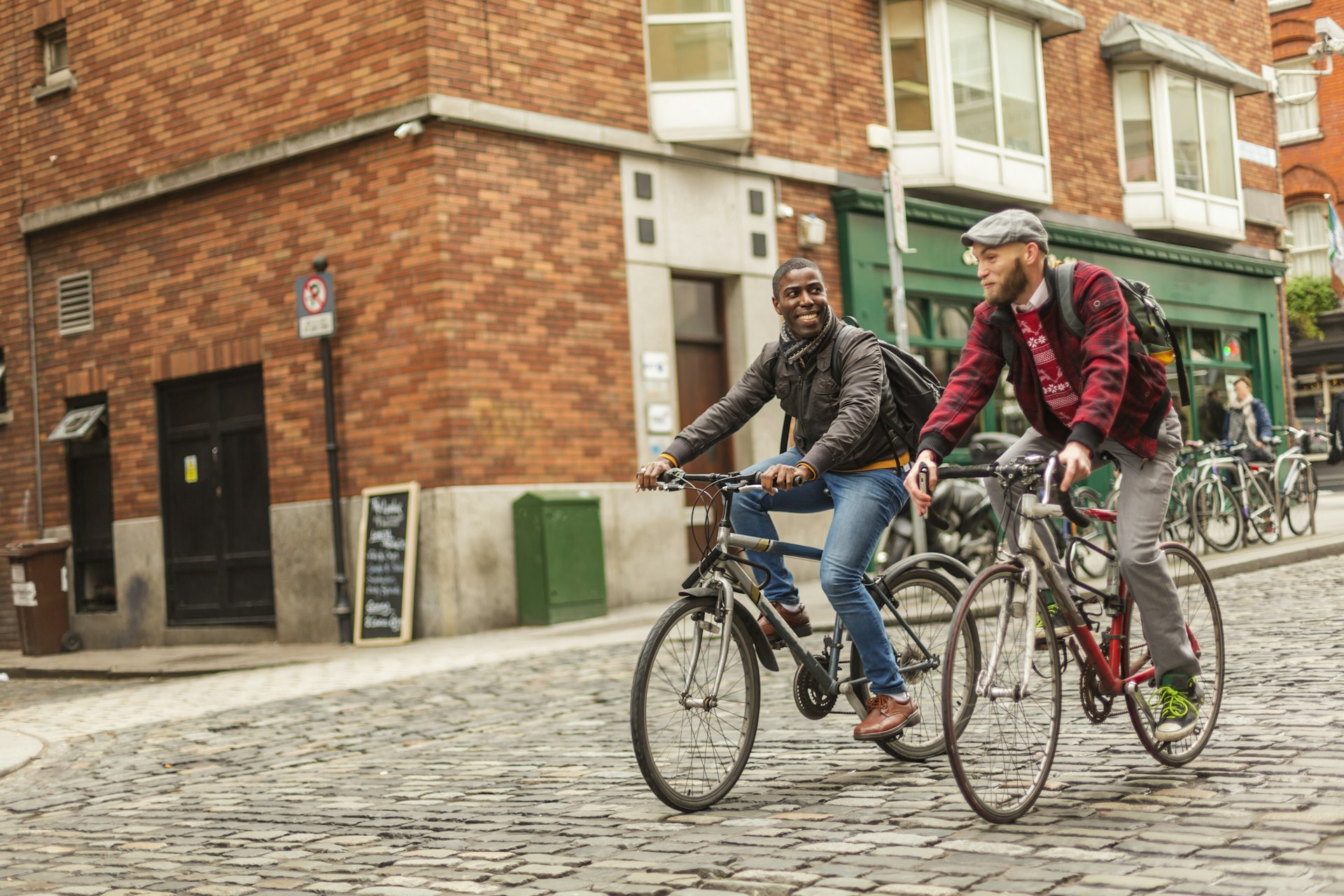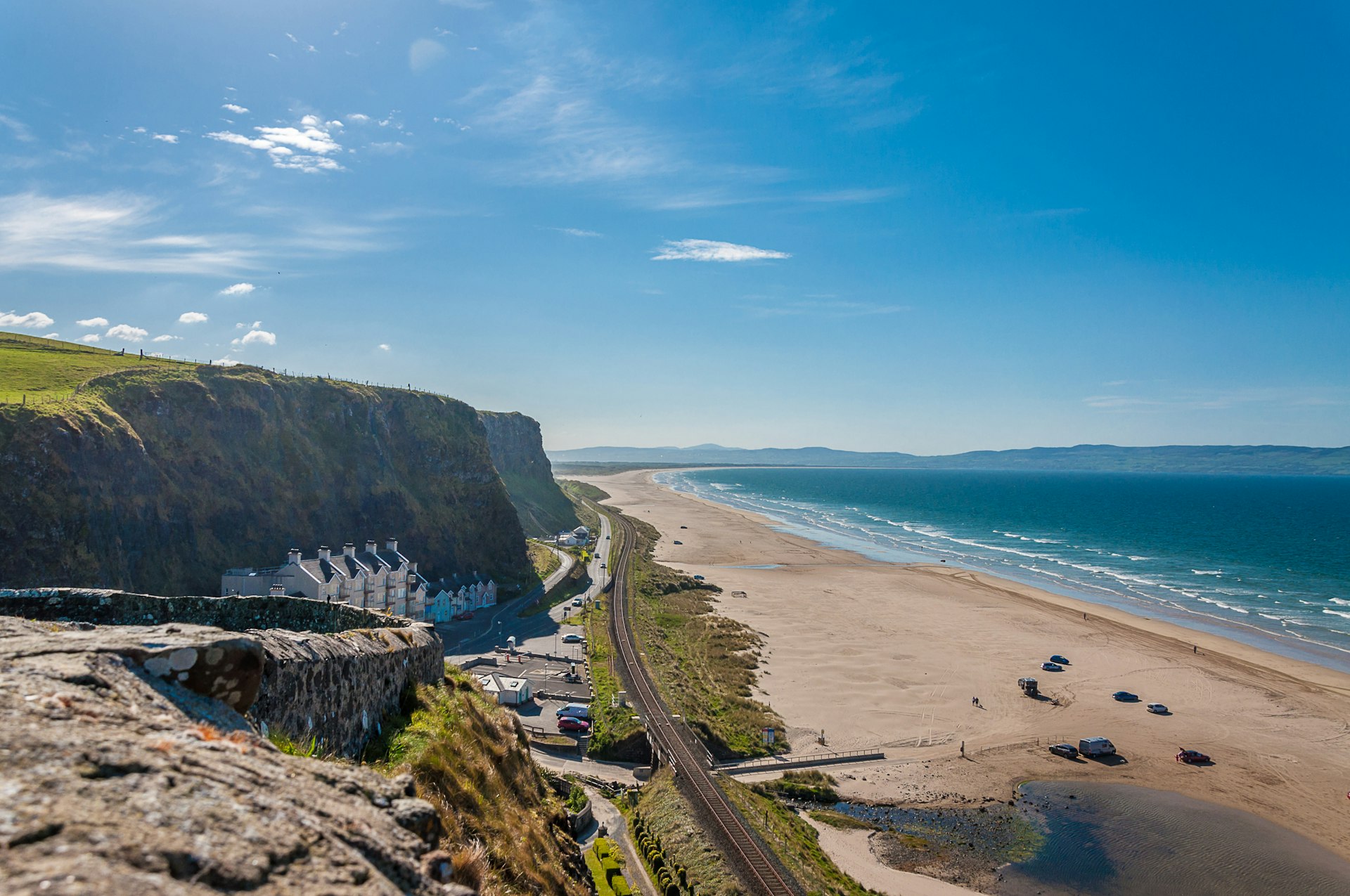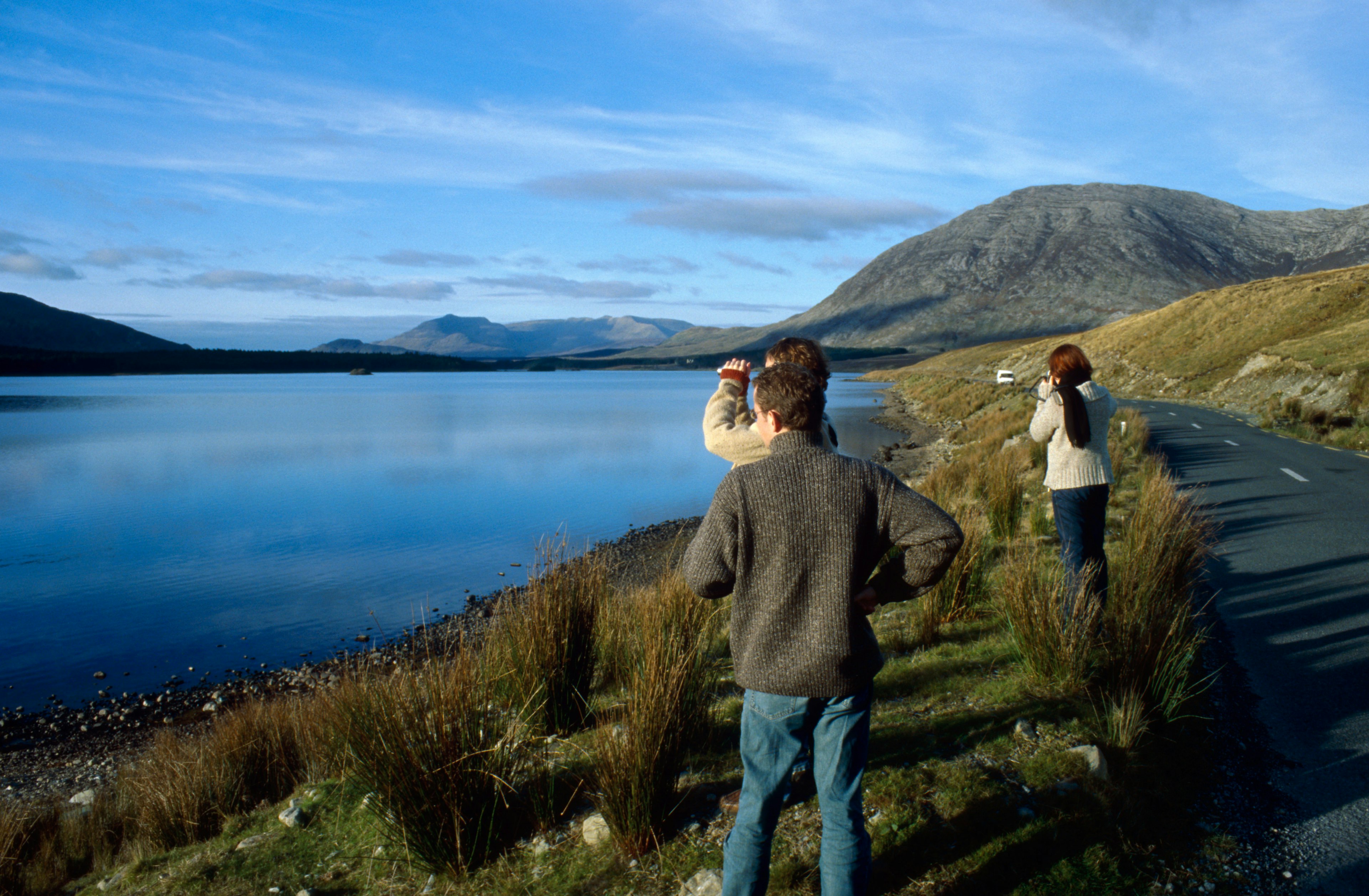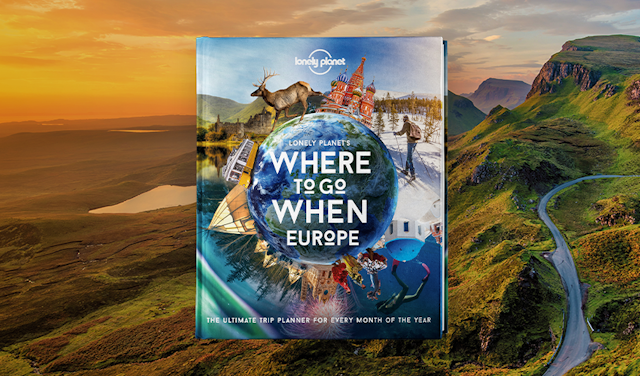Ireland is a relatively small island and many travelers will want to see as much of it as possible on their visit. So what's the best way to explore? The big decision in getting around Ireland is whether to go by car or use public transport.
Your own car will make the best use of your time and help you reach even the most remote of places. It's usually easy to get very cheap rentals – €30 (US$30) per day, or even less, is common – and if two or more are traveling together, the cost of rental and gas can be cheaper than bus fares.
The bus network, made up of a mix of public and private operators, is extensive and generally quite competitive, though journey times can be slow and lots of the points of interest outside towns are not served. The rail network is quicker but more limited, serving only some major towns and cities.
However, one strong point in favour of using public transport is the opportunity to make new friends. Ireland's people are one of its major draw cards, and whiling away a two-hour bus ride with a chatty local who can give you truckloads of advice, and tell a great story, may end up being a trip highlight.
Need more information to decide? Here’s our guide to your transport options for traveling around in Ireland.
1. Get to remote spots in Ireland by car
Traveling by car – or motorbike – means greater flexibility and independence. The road system is extensive and the network of motorways has cut driving times considerably. Also note, however, that many secondary roads are very narrow and at times rather perilous.

All cars on public roads must be insured. If you are bringing your own vehicle, check that your insurance will cover you in Ireland. Ireland may be one of the few countries where the posted speed limits are often much faster than you'll find possible!
European Union licenses are treated like Irish licenses, while non-EU licenses are valid in Ireland for up to 12 months; and if you plan to bring a car from Europe, it's illegal to drive without at least third-party insurance.
The basic rules to note are: drive on the left; overtake to the right; safety belts must be worn by the driver and all passengers; children aged under 12 aren't allowed to sit in the front passenger seat; when entering a roundabout, give way to the right; and in the Republic, speed-limit and distance signs are in kilometers; in the North, speed-limit and distance signs are often in miles.
Read more: The 10 best road trips in Ireland
2. Book your bus tickets early for the best prices
Wondering how to get around Ireland without a car? The extensive network of public and private buses is the most cost-effective way to get around. There's service to and from most inhabited areas. One bonus: you'll meet more locals and without a doubt you'll have many friendly conversations while travelling this way.
Private buses compete – often very favorably – with Bus Éireann in the Republic and also run where the national buses are irregular or absent. Distances are not especially long: few bus journeys will last longer than five hours. Bus Éireann bookings can be made online, but you can't reserve a seat for a particular service. Dynamic pricing is in effect on many routes, so book early to get the lowest fares.
Bus routes and frequencies are slowly contracting in the Republic. The National Journey Planner app by Transport for Ireland is very useful for planning bus and train trips. The main bus services in Ireland are Bus Éireann, the Republic's primary bus line, and Translink, Northern Ireland's main bus service that includes Ulsterbus and Goldline.
Dublin and Belfast have comprehensive local bus networks, as do some other large towns. Find out more about how to get around Dublin.

3. Mix cycling with bus and train travel to see more of Ireland
Ireland's compact size and scenic landscapes make it a good cycling destination. However, unreliable weather, very narrow roads and some very fast drivers are major concerns. Special tracks such as the 42km Great Western Greenway in County Mayo are a delight.
Buses will carry bikes, but only if there's room. For trains, bear in mind that intercity trains charge up to €10.50 per bike. Book in advance for Irish Rail, as there's only room for two bikes per service.
There are companies that arrange cycle tours in Ireland including Irish Cycling Safaris.
Top tip for cycling in Ireland: For cyclists in the west: the prevailing winds make it easier to cycle from south to north.

4. Train services are limited, but look at those views
A limited (and expensive) network links Dublin to all major urban centers, including Belfast in Northern Ireland. Given Ireland's relatively small size, train travel can be quick and advance-purchase fares are competitive with buses. Irish Rail operates trains in the Republic, while Translink NI Railways operates trains in Northern Ireland.
However, many of the Republic's most beautiful areas, such as whole swathes of the Wild Atlantic Way, are not served by rail. Most lines radiate out from Dublin, with limited ways of interconnecting between lines, which can complicate touring.
There are four routes from Belfast in Northern Ireland. One links with the system in the Republic via Newry to Dublin. The train journey from Coleraine to Derry takes in some epic views of the Atlantic.
Tip for taking a train: True 1st class only exists on the Dublin-Cork and Dublin-Belfast lines. On all other trains, seats are the same size as in standard class, despite any marketing come-ons such as 'Premier' class.

5. Catching a ferry or boat can prove a useful shortcut
Ireland's offshore islands are all served by boat. Ferries also operate across rivers, inlets and loughs, providing useful shortcuts, particularly for cyclists. Cruises are popular on a 258km section of the Shannon–Erne Waterway and on a variety of other lakes and loughs.
6. Arrange for accessible transport in advance
In big cities, most buses have low-floor access and priority spaces on board, but only 63% of the Bus Éireann coach fleet that operates on Commuter and Expressway services is wheelchair-accessible. Note, too, that many of its rural stops are not accessible.
Trains are accessible with help. Call 1850 366 222 (outside Republic of Ireland +353 1 836 6222) or email access@irishrail.ie 24 hours in advance to arrange assistance with boarding, alighting and transferring at intermediate stations. Note that there is a limited number of wheelchair-accessible spaces on each train. Newer trains have audio and visual information systems for visually impaired and hearing-impaired passengers. Assistance dogs may travel without restriction. A full list of station facilities can be found here.
The Citizens' Information Board in the Republic and Disability Action in Northern Ireland can give some advice to travelers with disabilities. Check out Accessible Ireland, Irish Wheelchair Association, Mobility Mojo and Trip-Ability for information. Or download Lonely Planet's free Accessible Travel guides here.


